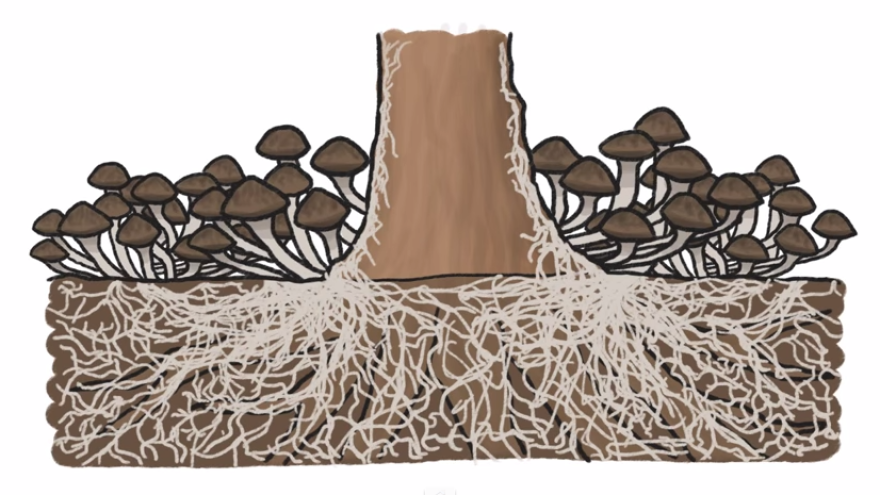What's the biggest living thing on Earth? I can think of two. I'm not sure which is biggest, but neither of them is a blue whale. These are weirder. Much, much weirder.
One is a tree. The other eats trees.
This is the tree.
Now, I know this looks like more than one tree. If you were counting, it looks like 47,000 trees — what normal people might call "a forest." But these trees are not separate beings. Every one of them is attached to a single underground root system, making each tree a stem projecting up from a common root. So the whole thing is an individual. Think of it as hairs spiking up from a secret underground head. In the fall, when it's time to change color, all these trees flip into golden yellow almost at once, as if the whole bunch just got a color rinse. Oh, and it's got a name: Pando. That's Latin for "I spread."
Pando was measured and given statistical biggitude by University of Colorado ecology professor Michael Grant, who was listening to NPR one day and heard about the other so-called biggest living thing on Earth, and decided, no, that other one is too unlovely. We can do better, he thought. That took him to Fish Lake, Utah, where he began measuring the quaking aspen trees that compose Pando.
The Other One

The other biggest living thing is also in America, in Oregon. It's so unpicturesque, I couldn't find a good photo of it because it lives almost entirely underground. It's hiding under more than 2,200 acres and is, in effect, a giant mushroom that spreads and strangles trees by sucking off their nutrients, making it impossible for the trees above it to get water.
So which one is biggest? The "tree"? Or the "tree strangler"? Well, it's a very, very close call, delightfully described by the very exacting, but very jolly folks at Minute Earth:
Copyright 2021 NPR. To see more, visit https://www.npr.org. 9(MDAxODc1ODA5MDEyMjg1MDYxNTFiZTgwZg004))


